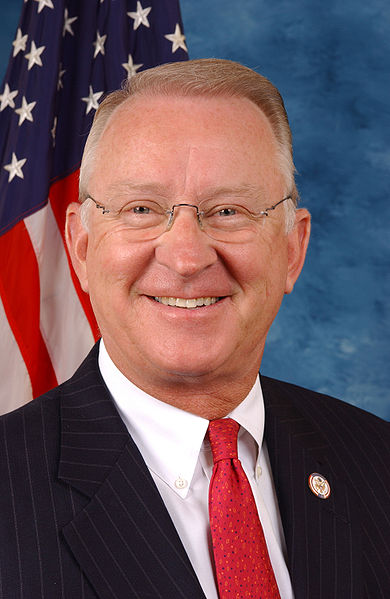
Many people do not know who their representative is in the House of Representatives. My Representative is Howard (Buck) McKeon of California. He began his work in the House of Representatives in 1993 and has consecutively been active since. He is a Republican and the ending of his term is going to be in 2008. At opencongress.org if you type in the name of your representative, you can find out whom he or she is and if their beliefs parallel yours. Buck’s “recent voting history” has been on issues like the SCHIP Extension Bill, which was a “Nay”, the Violent Radicalization and Homegrown Terrorism Prevention Act of 2007, which he abstained and a plethora a others which range from terrorism and taxing on mechanic’s work gloves. Buck votes most often with Rep. David Dreier (R, CA-26) and least often with Rep. Maurice Hinchey (D, NY-22). It also has a section from opensecrets.org which lets me know what donations have taken place.
I learned more about Buck McKeon from browsing all of the bills he has or has not supported and looking through his voting history. It’s great that I can who votes most and least like him because I can see where they are from. I find it very interesting that he votes most like David Dreier, and not some other Republican from another state. This may mean that McKeon and Dreier have a relationship and thus are voting on the same issues in the same way, but how Conservative is McKeon? After all, California is a liberal state. I got a better idea of the networking that can go on from each state, and thus, maybe there is a certain level of skewed voting. I recommend that anybody reading this find out who their Representative is at http://www.visi.com/juan/congress/ find out who your rep is and then go to opencongress.org.
I learned more about Buck McKeon from browsing all of the bills he has or has not supported and looking through his voting history. It’s great that I can who votes most and least like him because I can see where they are from. I find it very interesting that he votes most like David Dreier, and not some other Republican from another state. This may mean that McKeon and Dreier have a relationship and thus are voting on the same issues in the same way, but how Conservative is McKeon? After all, California is a liberal state. I got a better idea of the networking that can go on from each state, and thus, maybe there is a certain level of skewed voting. I recommend that anybody reading this find out who their Representative is at http://www.visi.com/juan/congress/ find out who your rep is and then go to opencongress.org.


